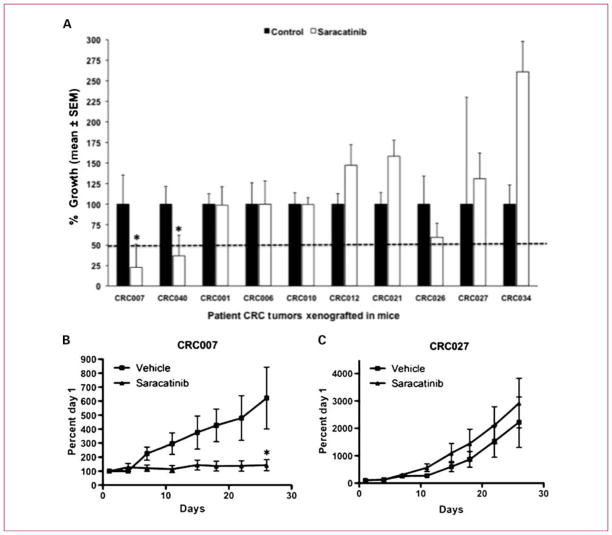Fig. 4.
Three gene pairs identified by K-TSP predicts saracatinib sensitivity in an independent test set. A, prospective validation of efficacy in 10 xenografts predicted by the K-TSP classifier. The 10 xenografts predicted for saracatinib sensitivity were treated with saracatinib 50 mg/kg/d by oral gavage for 28 d. Tumor size was evaluated twice per week by caliper measurements using the formula: tumor volume = (length × width2) × 0.52. TGI was calculated by relative tumor growth of treated mice divided by relative tumor growth of control mice × 100. Cases with a TGI of <50% were considered sensitive, and TGI of >50% were considered resistant to saracatinib. Two xenografts (CRC006 and CRC040) were sensitive to saracatinib (TGI ≤ 50%), and eight xenografts were resistant to saracatinib (TGI > 50%). CRC001, CRC006 (predicted sensitive), and CRC040 (predicted resistant) by the K-TSP classifier were misclassified. Columns, mean (n = 8-0 tumors per group); bars, SEM. *, significance (P < 0.05) compared with vehicle-treated tumors. B, representative graph of a sensitive tumor (CRC007) and (C) resistant tumor (CRC027) treated with saracatinib.

